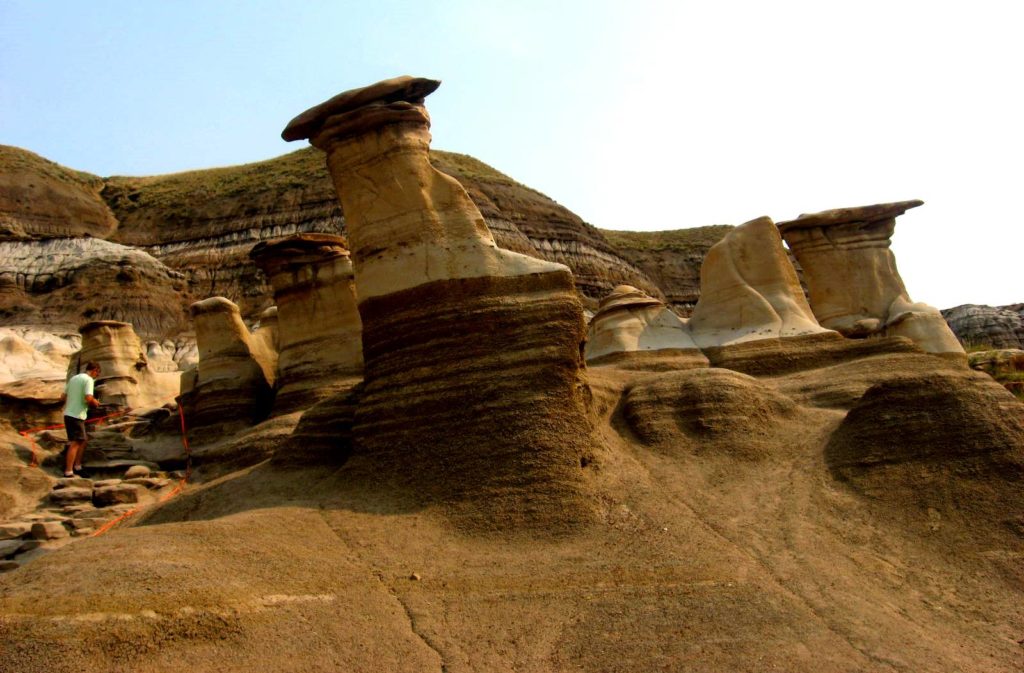Chapter 8. Weathering, Sediment, and Soil

Chapter Goals
Complete this chapter so you can:
- Explain why rocks formed at depth in the crust are susceptible to weathering at the surface.
- Describe the main processes of mechanical weathering, and the materials that are produced.
- Describe the main processes of chemical weathering, and common chemical weathering products.
- Explain the characteristics used to describe sediments, and what those characteristics can tell us about the origins of the sediments.
- Discuss the relationships between weathering and soil formation, and the origins of soil horizons.
- Describe and explain the distribution of Canadian soil types.
- Explain how changing weathering rates affect the carbon cycle and the climate system.
What Is Weathering?
Weathering occurs when rock is exposed to the “weather”—to the forces and conditions that exist at Earth’s surface. Rocks that form deep within Earth experience relatively constant temperature, high pressure, have no contact with the atmosphere, and little or no interaction with moving water. Once overlying layers are eroded away and a rock is exposed at the surface, conditions change dramatically. Temperatures vary widely, and pressure is much lower. Reactive gases like oxygen and carbon dioxide are plentiful, and in many climates, water is abundant.
Weathering can be characterized as mechanical (or physical), and chemical. In mechanical weathering, physical processes break rock into smaller pieces. In chemical weathering, chemical reactions change minerals into forms that are less affected by chemical reactions that occur at Earth’s surface. Mechanical and chemical weathering reinforce each other, because mechanical weathering provides new fresh surfaces for attack by chemical processes, and chemical weathering weakens the rock so that it is more susceptible to mechanical weathering. Together, these processes create the particles and ions that can eventually become sedimentary rock. They also create soil, which is necessary for our existence on Earth.
Can You Tell the Difference Between Physical & Chemical Weathering?

